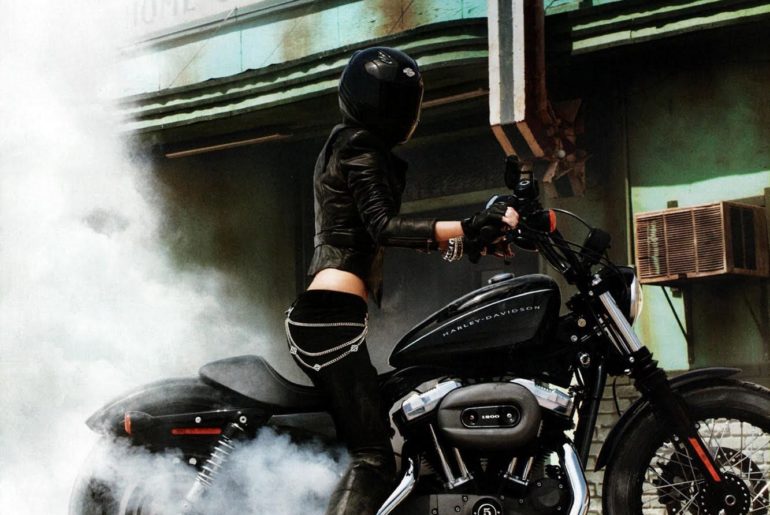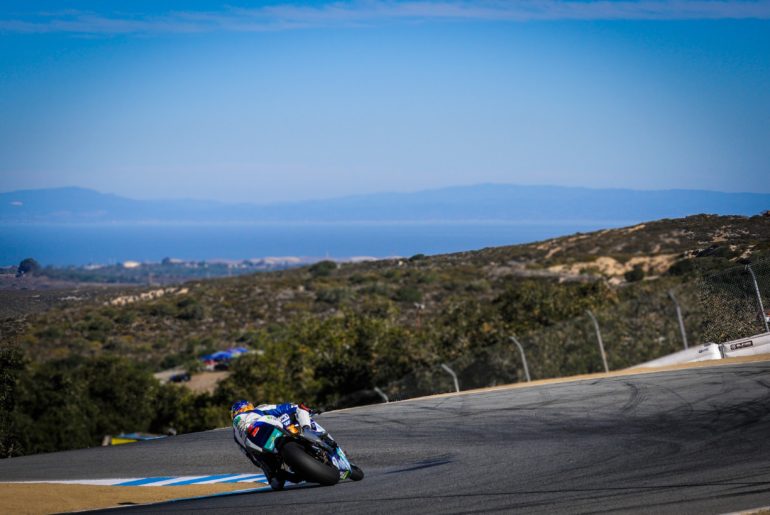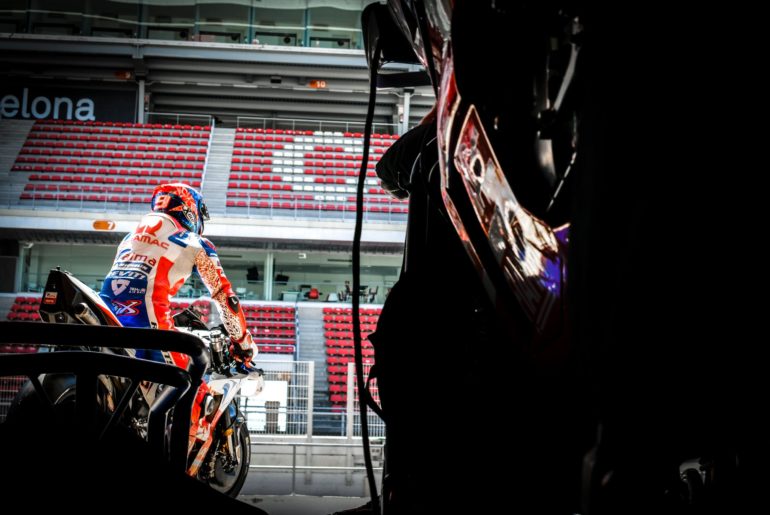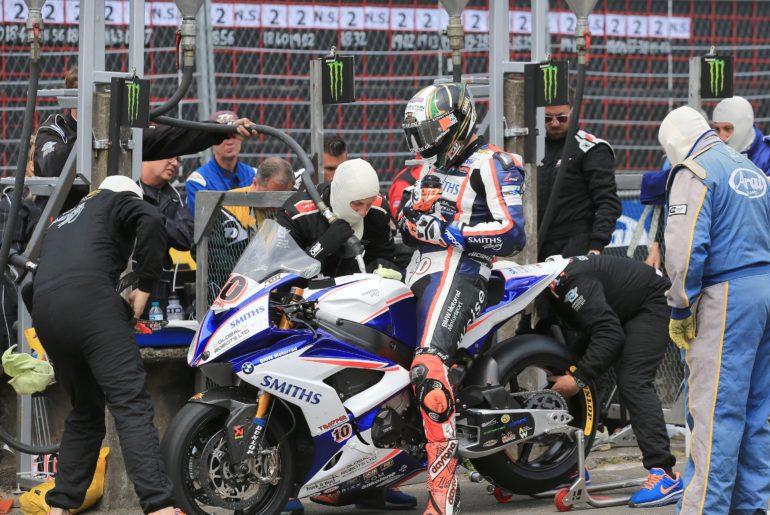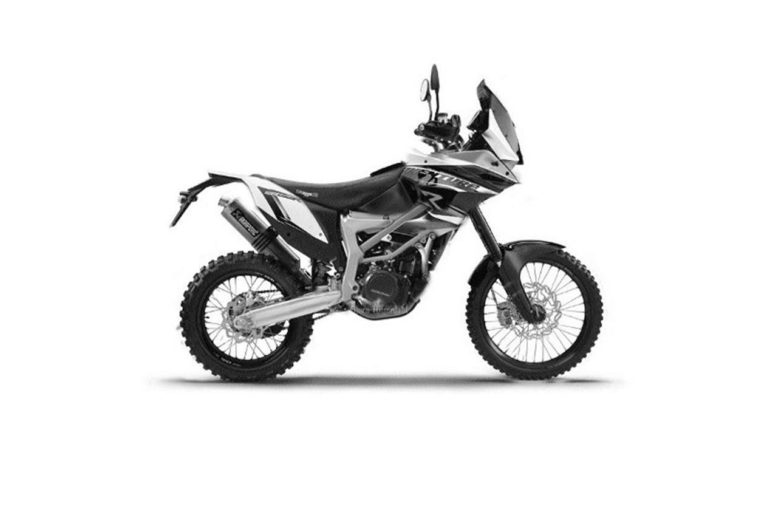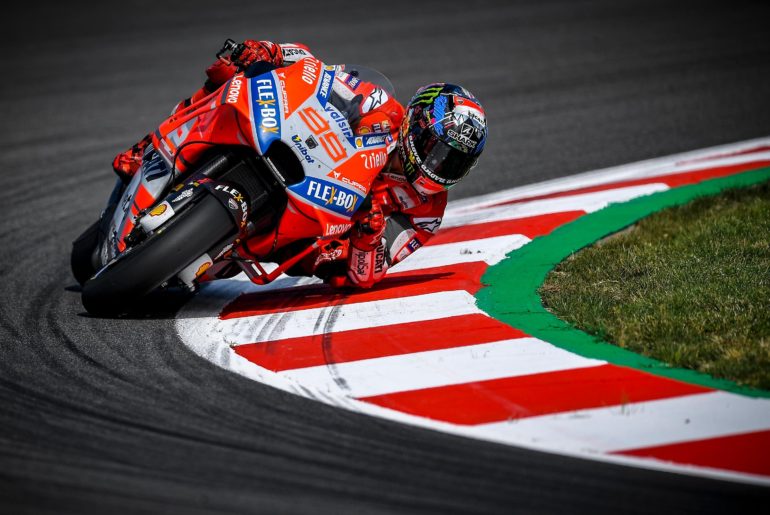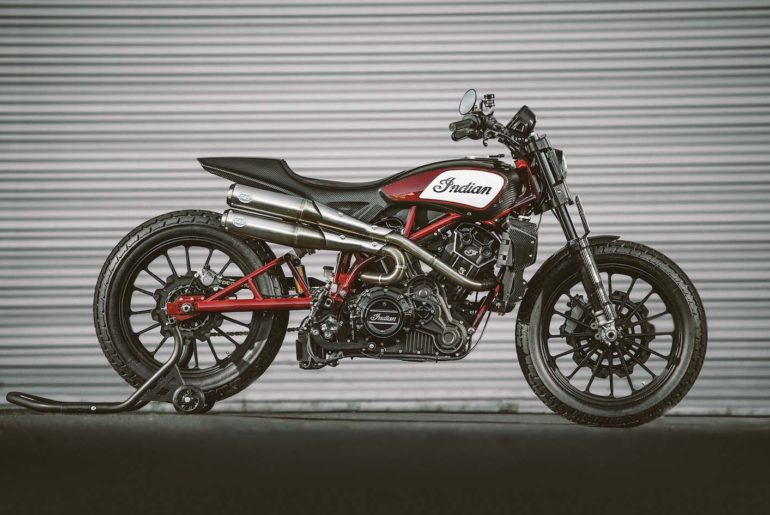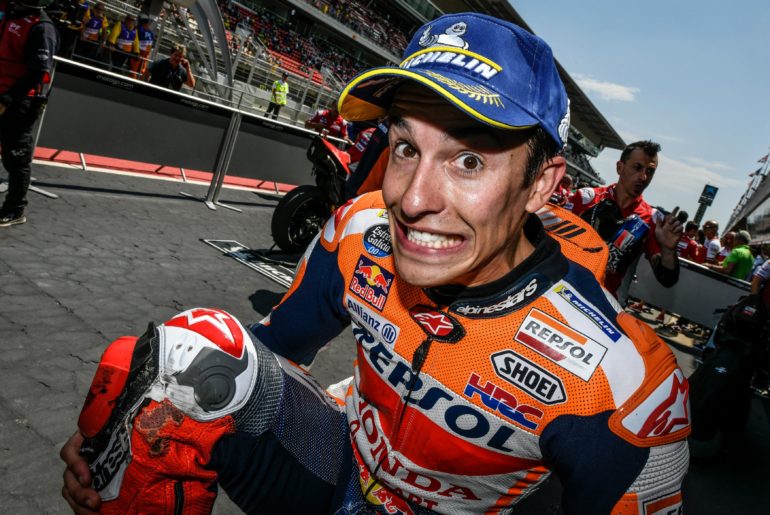How do you win a championship? There are two schools of thought. Casey Stoner believed that the way you won world titles was by focusing on winning races. “If you win races, the championships will look after themselves,” he said when he was still racing.
Others argue that consistency is key, that you win titles by getting the best result available on the day, and hope that you don’t make mistakes. After all, Emilio Alzamora became 125cc World Champion in 1999 through sheer consistency, without winning a single race that season.
The riders in contention for the 2018 MotoGP title have mixed opinions about the best way to win a championship. Marc Márquez wanted to win every race he started in, until the 2015 Honda RC213V got the better of him, and he had to push too hard to try to be competitive, crashing himself out of contention.
Since then, he has tamed his approach, winning whenever possible, but understanding that sometimes, he has to grit his teeth and settle for whatever is available on the day.
Valentino Rossi, wily veteran that he is, follows the same approach, take what you can, where you can, and wait to see where it takes you. That’s how he came close to racking up title number ten in 2015, and that’s how he has remained in contention every season since he came back to Yamaha in 2013.
On Sunday night, Andrea Dovizioso affirmed that he was thinking about the championship in every race as well. “My approach to the race is always thinking about the championship,” the Ducati rider said. “If I fight for the championship or for another position, I always race for the championship.”
More Grip, Yet More Greasy
So it was clear from the first day of practice at Barcelona that this race could be key in the championship. The new surface at the circuit vastly improves the grip from last year, but doesn’t make the challenge any less complicated.
New asphalt contains more oil, which takes some time to evaporate, and can make a track greasy. New asphalt is darker, which means it gets hotter more quickly when the sun is on it.
Tire choice becomes crucial, complicating the job of the riders and teams even further. The track changed a lot from morning to afternoon, and as more rubber was laid down on the track.
The one man who seemed entirely untroubled whatever the conditions was Jorge Lorenzo. Fresh from his first victory on the Ducati at Mugello, at his home race, at one of his favorite circuits, the Mallorcan started off the weekend looking invincible, and never really looked anything else all the way until the checkered flag on Sunday.
Even what looked like a slight regression in FP3 was merely misconception: while the pack sought safe passage to Q2, Lorenzo spent his morning doing a race simulation, racking up almost race distance on a set of soft tires, preparing himself for Sunday afternoon.
In FP4, he was bested by Andrea Iannone, though only because the Suzuki rider slipped on fresh rubber in pursuit of a quick lap.
Pole had not quite been a formality for Lorenzo, but it would have been quite a surprise if he had not started from first on the grid. Marc Márquez had done his best to deprive Lorenzo of pole, taking extreme risks in the attempt, but fallen just short.
Márquez knew that if he was to beat Jorge Lorenzo, his only chance lay in beating him to the first corner, and trying to disrupt his rhythm through the race.
That was no easy feat: in recent races, Lorenzo had found his starting mojo. Since Jerez, the Spaniard had led into the first corner, and from there, the opening laps.
At Mugello, after he finally got the new tank spacer he had been asking for, he led the first lap, the last lap, and all the laps in between. Lorenzo style. For the Barcelona race, bookmakers were offering odds on the margin of Lorenzo’s victory, regarding the fact that he would win as a foregone conclusion.
Holeshot Hopes
Having failed to claim pole, Marc Márquez had one more shot. Get off the line ahead of Lorenzo and lead into Turn 1, and he would have a shot at upsetting his pace through the race, and managing his own choice of hard tires front and rear.
In a supreme effort off the line, he led the pack into Turn 1, Lorenzo hot on his heels. “I was just trying to be really focused on the start to take the lead, because I chose the hard front, hard rear,” Márquez told the press conference.
The next task was to keep Lorenzo behind him, and he had a little help from Andrea Iannone. The Suzuki rider was off the line quickly and past Lorenzo, bumping him back into the clutches of Andrea Dovizioso.
Iannone’s pass gave Márquez some respite, a tiny gap opening up to the blue and yellow GSX-RR. But on the soft tires front and rear, Iannone’s tactic was to try to get to the front as quickly as possible, and he made an enthusiastic attempt to take the lead from Márquez at Turn 10.
But his enthusiasm exceeded his ability to brake and get the bike turned, and in running wide, he slowed Márquez up just enough to allow Lorenzo to catch the Repsol Honda once again.
With Lorenzo now firmly on his tail, Márquez suspected that his fate was probably sealed. “It was difficult in the first lap to warm the tires. Then I was waiting for Jorge to overtake me. I was waiting and already on the first straight he overtook me.”
There was no answer to the superior horsepower of the Desmosedici GP18, backed by Lorenzo’s ability to get off the corner. With the finish line so close to the last corner, Márquez led Lorenzo across the line at the end of the first lap, a blemish on Lorenzo’s perfect record in the last three races, but by the end of the straight, Lorenzo had the lead.
His chance of victory probably gone, Márquez turned to plan B: if you can’t win the race, get what you can for the championship. “Then I tried to follow him,” Márquez said. “I was pushing a lot because my mentality was try to follow him for open the gap with the others.”
Sticking with Lorenzo for as long as possible would put pressure on his championship rivals. Jorge Lorenzo was far enough behind him in the championship standings that he could afford to cede him five points. Anything he could gain on Valentino Rossi, Andrea Dovizioso, Maverick Viñales was a bonus.
Mr. Metronome
The race became a war of attrition. Jorge Lorenzo, certain of his pace, hammered out his metronomic rhythm, a reprise of his performance at Yamaha, lap after lap with little variation between them. From lap 3 to lap 13, Lorenzo did four 1’40.0s, four 1’40.1s, and a couple of 1’40.2s.
From lap 14 to lap 22, before he started to slow for the checkered flag, he did four 1’40.4s, a couple of 1’40.3s, and 1’40.502. His pace varied by three tenths in the first half of the race, and three tenths in the second half of the race. This was the hammer and the butter combining to create victory.
As Lorenzo focused on grinding out his asphyxiating pace, those behind him were left struggling for breath. Márquez clung on to Lorenzo’s tail for dear life, knowing that if he could stay with the Ducati, he could open a gap to Andrea Dovizioso behind him.
The Italian, meanwhile, was pushing hard to try to stay with Márquez, fearing losing yet more points to the world champion after two DNFs already this season. Márquez was pushing to stay with Lorenzo, Dovizioso was pushing to catch Márquez, and seeing the Repsol Honda slowly creep away from him.
Something had to give. Staying with Lorenzo forced Márquez to take risks he hadn’t planned on taking. But it was Dovizioso who as the first to break. On lap 9, the Italian crashed out at Turn 5, pushing too hard to try to keep up.
Dovizioso was brutally honest about the cause of the crash. “I arrived 5-6 kilometers faster because I was able to exit a bit better Turn 4, and I braked too much. A mistake because I was on the limit.”
Strategic Failure
His crash was not because he feared Lorenzo outperforming him, Dovizioso said, but because he was focused on the battle in the championship with Márquez.
“It’s not about Jorge, it’s about I want to win the race because I have the good speed and we have to gain the points to Marc. And Marc was there,” Dovizioso told us.
“So I was pushing. I didn’t want to give up. My speed in the race wasn’t good enough. I lose one tenth, almost two tenths in one lap. But when the grip is very low, one or two tenths can be like one second. So I was pushing too much. This is what happened and we go home with zero points.”
Dovizioso’s crash came almost as a relief to Marc Márquez. “In one moment I lost the front in the same lap that Dovi crashed,” he told the press conference.
“Then I start to see many yellow flags in the circuit, many crashes. After Mugello, there was something that I was missing some confidence. This weekend we already crashed two times. I had a big save in the last corner.”
“So it was time to finish the race, take 20 points. Last laps I try to keep pushing for see if Lorenzo drop with the tires, but mine were dropping in the same way. So then I just managed the distance with Valentino and finish the race in second place.”
Dovizioso’s approach to the championship of wanting to take points from Márquez turned out to be the wrong one at Barcelona. Speaking to the press afterwards, he conceded defeat, though he held open the slimmest sliver of hope.
“I mean if you are objective in this moment, 49 points, a lot of riders in front of me, Marc is very consistent, fast everywhere,” he said.
“But I don’t think that’s the reality because every race, everything can happen. Because it’s easy to make a mistake, everybody is on the limit, the weather can create a different situation, and all the strongest, all the fast riders on top of the championship are crazy!”
“So it can create a lot of strange situations. About that there is not a question mark and, yes the reality is difficult, but there are a lot of points left.”
How did Lorenzo win and Dovizioso end up crashing out? For the Italian, the key to his teammate’s victory was the way he was braking. “I believe after the race, for riders who brake with some slide, it didn’t work here, Dovizioso explained.
“If you look, Jorge was braking completely straight. I think in this track, with this asphalt and the tires we have, it worked because there isn’t grip and it was very difficult to manage the slide.”
“So when you are going in the race, and the grip is a little bit less, you are always on the limit of the grip. And if the grip is less you are slower. So I think if you brake a bit straight, it can help you. Especially if you lose one tenth in one lap.”
Biting the Bullet
With Dovizioso out, Márquez backed off three tenths a lap, and let Lorenzo finally slip out of his grasp. Yet in the press conference, he denied that seeing that the Italian had crashed had changed his strategy in the race.
“It didn’t change because my strategy was clever and I was so focused just on my riding, forget the others,” he said.
But finishing second is still not something that brings Márquez much pleasure. “When you finish in second place, inside of my mind I’m missing something. But if you check the championship we increase the advantage.
Now we are 27 points in front. So, happy because the worst result this year is a second place. The other races is because I crash. We need to manage this and be constant on the podium.”
It had been easy to crash at Barcelona, in part because the added grip of new asphalt gave the riders false confidence, Márquez explained.
“Maybe is because it was quite difficult to stop the bike in a straight line because the rear slide a lot. Maybe with the new asphalt is a little bit like Le Mans. Not only in MotoGP but also Moto3 and Moto2 many crashes.”
“New asphalt give to you good confidence to push, but when you have a warning it’s so aggressive. For that reason it’s more difficult to find the limit, is what I explained in the past.”
“With a track that is more slippery, then you are always there on the limit and you can manage in a better way. Is strange, but for me is like this.”
On a track with less grip, the tires start to slide earlier, but they do so more gradually, giving the rider plenty of warning. On a track with fresh asphalt, the grip is higher, but that also means you are closer to the maximum grip of the tires.
Once you go over that maximum, grip falls off a cliff, and the tires get away from you with no warning. Andrea Dovizioso wasn’t the only rider to lose that battle at Barcelona. Nine others went down before and after him.
A long way to go
Valentino Rossi crossed the line in third, having lost contact with the leaders early on, but never really challenged from the rear. It was his third consecutive third place finish, consolidating his second place in the championship.
He lost 4 more points to championship leader Marc Márquez, but he extended his advantage over Movistar Yamaha teammate Maverick Viñales to 11 points.
Rossi was still happy with a podium, given the miserable time the Yamahas had had at Barcelona in 2017. “I’m happy for this podium because in this track last year we struggled very much, it was one of the worst races in the season,” he said.
He was happy to be competitive, but he knew he stood no chance against the men ahead of him. “I know after the practice that the two Ducatis and Marquez are faster than me. I think that I have to fight more with the second group like in Mugello because more or less the pace was that.”
He and his crew had found something extra on Sunday morning, however, and that had given him a little bit of extra pace. “This morning in the warm up we improved the balance of the bike, and I was able to turn in a better way.”
“Also I was very worried about the soft front, but in reality in the race, yes. At the beginning you have to manage, but after the tire work well and provide good grip. I’m also happy because my pace was good to the end.”
“I was not so far form Jorge and Marc. Unfortunately is not enough for try to stay with them and fight, but anyway it was good.”
Honda Herd
If the race had been robbed of most of its tension once Andrea Dovizioso had crashed out, there was still some excitement in the battle for places behind the podium.
Cal Crutchlow beat Dani Pedrosa into fourth, and was a little frustrated that he could have had a shot at third. He had chosen the medium front tire, and tried to manage that in the early laps, which had cost him time, he said.
“I didn’t go hard enough at the start but that was the risk with the full tank and a medium tire on the front. I picked them off one by one and thought if I could get one a lap then I’d be in a good position.”
“I made a mistake with Dani because I should have passed him four laps before like I could have, but I didn’t think Valentino was reachable.”
For Pedrosa, the battle he had had with Crutchlow, Danilo Petrucci, and Maverick Viñales had proved instructive.
“What I can say is that I was not as fast in the turns, and not as fast in the exit of the turns, so I was kind of blocking him a little bit in that part, but I was much stronger on the brakes,” the Repsol Honda rider explained after the race.
“I can see that the way of using the rear grip is different, and I wasn’t going so fast out of the corner.” There were lessons here for future races, Pedrosa said, especially for qualifying, which has been his Achilles heel in recent races.
“I think this is something we have to work for, because that I believe is one of the reasons I struggle in qualifying with a new tire.”
“So if we can managed to change a little bit the way of going into the corner, then this can help to use better the grip on the mid and exit because today, as I could see with Cal and Petrucci, and also Viñales that came strong at the end, they were faster than me mid-exit, with more traction and grip, edge grip.”
“I was good on the brakes, but the overall time, I was losing maybe 0.3, 0.4.”
Poor qualifying had left Pedrosa stranded on the fourth row of the grid, caught in the opening lap melee. But he was pleased with his performance, fighting his way forward from eleventh on the grid to finish fifth.
The twenty or so journalists who turned up to see him after what he felt was a solid performance was in stark contrast to the hundreds which had packed the HRC hospitality unit when they thought he might announce his retirement.
New Tactics, Same Result
Pedrosa had held on to fifth just ahead of Maverick Viñales. The Movistar Yamaha rider had attempted a new procedure to help make him more competitive in the early laps, but had ended up with the same result: losing too much ground in the first couple of laps, then ending the race with pace that would have put him in contention for the podium.
“I don’t know what to do any more,” an exasperated Viñales told us on Sunday afternoon. “I use the same style that I do in the practice and then I get into the wheelie. Honestly, the first ten laps of the race is to put in the trash. It’s like this because [afterwards] I am riding as fast at the top guys.”
“I had a nice battle with Johann but I don’t think it is the place to be. We need to be at the front, at least close to Valentino so there is a lot of work to do for sure.”
The new warm up procedure – pushing hard on the sighting lap and the warm up lap, to start the race with warmer tires – had helped, Viñales said, but it hadn’t solved the problem. “For sure it helps but these were in much better conditions and finally I could brake much better.”
“Still with a full tank it is impossible for me to ride the bike, I just go very wide everywhere and sliding a lot on the tires. Last year was a totally different feeling in the beginning of the race and in the first part of the season. I cannot do more with this bike, honestly. I give my best and give my maximum every lap.”
Viñales rejected the idea that his result was down to it being at a particular track. “For me there is no good or bad track. If the bike works then it works everywhere. It cannot be there at one track you and there and then the next week you are tenth, like last year. This cannot happen.”
Teamwork Makes…
For Johann Zarco, the cause of his seventh place was clearer. He and his team had simply not made enough progress through the weekend, he told us.
“This weekend, we started well, and instead of trying to go forward every practice, we were doing good things, and then going back, doing good things, then going back,” Zarco said.
“So it’s not a good way to build up a victory for Sunday, but we need to live it to understand it. And now we were speaking with the team to say, it’s easier to say it than do it, but if you start the weekend well and keep going forward, even if sometimes you have a bit down, but not every practice has up and down, then you are ready to think about very good things in the race.”
Part of the problem, according to Zarco, is that the difference between the bikes and riders is once again smaller this year.
“Since Texas, we can feel that the races are different than last year, and it looks much more difficult, because the tires are constant, and all the riders on the track are stronger, and they are controlling better, they are working better for the race than before. So it makes the job difficult for everyone, and me it makes me think a little bit differently for the next races.”
That offered opportunities to those with experience, and those willing to use it, Zarco said. He had been watching what Valentino Rossi had been doing, and trying to learn from it.
“That’s the difference between last year and this year, and we can see Valentino is still the one catching the opportunities. All the opportunities he can, he takes them. Maybe I don’t have enough experience to do that, but I’m clever enough to see that. I want to control well that things for the next races, because I won’t let him go in the championship.”
Tank Spacer
Victory for Jorge Lorenzo made it two wins in a row for the Spaniard, and they came at the right time for him, after he had taken so much criticism in the press – directly from journalists, indirectly from senior members of Ducati management, most notably Claudio Domenicali.
Winning at Barcelona was important, but not as important as the win at Mugello. “I think the Mugello one [was more important] because I have to do it,” Lorenzo said. “The pressure was higher.”
“This time my mentality was let’s try to win, but if it’s not possible I try to be in the podium because I already have won. The most special one was Mugello because we are human.”
“The first time you make something in life is the most special one, the one who make you more happy. Now I’m happy. I cannot deny that. I’m very happy and we’re going to celebrate this like in Mugello. But is not the same as the first one.”
Where does this victory come from? The obvious thing which has changed is that he had finally been given a tank spacer which was shaped to give him the support in braking he had been asking for.
Two pictures tweeted by MCN journalist Simon Patterson show the clear difference between the two. On the left, the much wider and thicker rear section which he can hook his legs under during braking.
On the right, the narrower standard version which offers less support, but which allows more freedom of movement. (Worth noting that the tank does not help in the part of the corner shown here, but here you can see the change, and the change in body position).
Puzzle Pieces
Lorenzo pointed out that there was more to it than just the tank, however. “As I said in these days I think the fuel tank was the last step that I needed to be back, to be more competitive,” the Spaniard said.
“But more than anything was the consistency. The saving of energy that give me the comfort to keep the same pace through a complete race.” Before, he only lasted a certain number of laps before he started to slow down.
“I was competitive five laps, seven laps or even fifteen laps, but then in the last part of the race I was so tired that I had to drop.”
“But it was not only the fuel tank,” Lorenzo added. “It was small steps that we were making the last months that give us this speed. When we got the speed, we just needed the last step on consistency.”
This was echoed by members of Ducati staff: at Jerez, Lorenzo had received a more flexible chassis which made it a little easier to turn. At the start of the season, they had introduced an engine which is slightly less aggressive.
Over the winter, they had worked on the electronics to make the bike a little easier to handle. The fuel tank was the final piece of a complex jigsaw puzzle, the made it possible for Lorenzo to compete.
Or at least compete at Mugello and Barcelona, two tracks at which Lorenzo has always been strong, and where conditions worked in his favor. How much of Lorenzo’s competitiveness will remain at Assen and Sachsenring, where he could have to ride on a cold and damp track, is still very much an open question.
How that affects his confidence will be important, but if he comes through the next two races in decent shape, then more wins are not out of the question. With a deficit of 49 points to Marc Márquez, the championship looks out of reach. But as his teammate said, anything can still happen.
Industrial Relations
Lorenzo’s victory exposed the fact that the wounds Ducati and Lorenzo have inflicted upon one another through a troubled season and a half are still very much open. In Parc Ferme, Lorenzo studiously ignored Ducati CEO Claudio Domenicali, just as he had done in Mugello.
In the press conference, answering a question about the comparison between the bike he was riding and the bike which Valentino Rossi rode when the Italian was at Ducati, he saw another opportunity to apply his sometimes dry and very acerbic wit.
“I think Vale’s Ducati was more complicated,” Lorenzo answered, comparing Rossi’s bike to his own. “From the outside, I believe that. As I said before, now for me this is the more complete Ducati ever. Vale is a great rider, so why not?”
Then, harking back to his own response to Domenicali calling him a great rider, Lorenzo stuck the knife in. “Not a great rider, a champion.”
In an interview with Spanish sports daily AS.com, Domenicali gave his own version of events. “When they interviewed me [for Italian TV] after the race at Mugello, I said nothing had been decided,” Domenicali told Mela Chercoles.
“Ten minutes later, he said that he had already decided. More patience was needed. It’s a shame he did not have it.”
The Ducati CEO went on to explain that it had taken a long time for the Ducati engineers to understand from Lorenzo’s feedback exactly what was needed. The tank was the last part of a long line of parts which had helped, and this had made the difference.
The tensions between Lorenzo and Ducati, and the difference between how the Spaniard was perceived in the factory and how the Italian rider was were obvious even to Marc Márquez.
“They are a professional team, and a factory and a team don’t really care if one rider wins or the other, what they want to do is win races, win every championship,” Márquez told the Spanish media.
“But sometimes the passion is different. I have seen the team celebrating a victory by Dovi, and today saw them celebrating one by Jorge, and it’s a very different thing.”
Champions, But Not Friends
With Jorge Lorenzo, Marc Márquez, and Valentino Rossi on the podium, it was one of the most decorated of all time. The three podium men share 20 world titles, 246 Grand Prix victories, 488 podiums, and 205 poles between them, according to Spanish journalist Borja Gonzalez. Some record.
The last time so many world championships were gathered together on a single podium was at Brno in 1975, where Phil Read beat Giacomo Agostini, but Agostini did enough to take his 15th world championship, which with Read’s seven made it a grand total of 22 world titles on one podium.
In the press conference, Lorenzo and Rossi were asked if their relationship had changed in recent years, if their previous enmity had been dropped and they were friends once again.
The answers they gave were revealing of the true nature of friendship between professional athletes competing in the same sport and at the same level. “I don’t think we are friends,” Lorenzo said. “Even if I think outside the track probably we will have fun because I think we like to have fun outside the Grand Prix.”
Rivalry trumps friendship, however. “It is difficult to be friends with a rival,” Lorenzo said. “Two strong characters and two riders that want to win. But the most important thing is to have respect, and I have huge respect to Vale and I think the same to me.”
“We are great champions and we are one of the best in history. Here we are three guys who have many championships, who made history in a lot of years in MotoGP. So it’s a good thing for the sport.”
Rossi felt much the same way. “We have difficult times but also good times. A little bit of up and down. One or two quite deep. But is like this. Difficult when you fight for the same result, and also Jorge is one of my strongest and toughest rivals in my career.”
“We stay a long time together in the same team, that means also more difficult. But I think is normal like this. The important thing is the respect for sure.”
Riders Can Be Friends
For a professional athlete, winning counts above everything. Above love, above friendship, above everything. That intensity of ambition is the only emotion strong enough which can sustain the level of sacrifice which athletes – and MotoGP riders are first and foremost athletes – have to make.
There is only one MotoGP champion, and the riders who know they can win it cannot afford to feel any pity for the rivals who stand in their way.
That does not mean there can be no friendship between riders, however. The life and ambition of a rider is so unique that it is often only other riders who understand them, who know what they are going though.
So there are riders who are good friends, but that is usually because their trajectories are not intersecting at that point in time. Cal Crutchlow has been a great friend and mentor to Jack Miller, arguably saving his career by taking him under his wing and helping him to mature, and focus on getting the best from his ability.
But at the moment, Crutchlow’s ambitions are focused on trying to be in a position to win races, while Miller is aiming to get into contention for the podium. When they are both gunning for wins, or gunning for a championship, strains may yet appear.
Chasing the Title, Breaking the Streak
At the moment, however, the only rider with a clear chance at the title is Marc Márquez. Márquez rode a brilliant race under the circumstances, accepting that he could not beat Jorge Lorenzo, but hanging on to take as many points as possible in the championship.
Valentino Rossi cemented his second place in the standings, taking another podium, with a little help from Andrea Dovizioso.
But Rossi’s third place once again underlined the trouble Yamaha are in. This was the eighteenth race in a row without a victory for the Japanese factory, and they have now gone a full MotoGP season without a win.
Barcelona equaled Yamaha’s previous longest losing streak in 2002 and 2003, when they went winless after Sepang in 2002 and didn’t win a race in 2003. It took Valentino Rossi defecting from Honda, together with a radically new engine design by engineer Masao Furusawa, to break that streak.
Now Yamaha must pin their hopes on Rossi’s magic at Assen for salvation once again.
Photo: MotoGP
This article was originally published on MotoMatters, and is republished here on Asphalt & Rubber with permission by the author.

